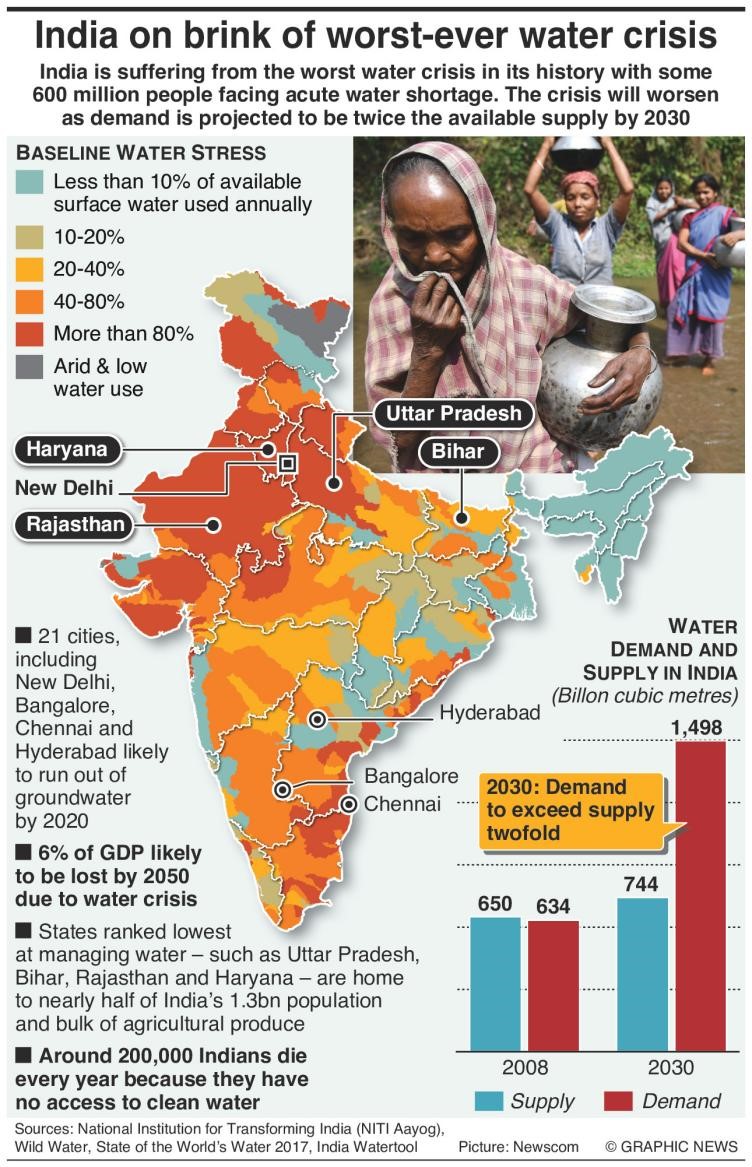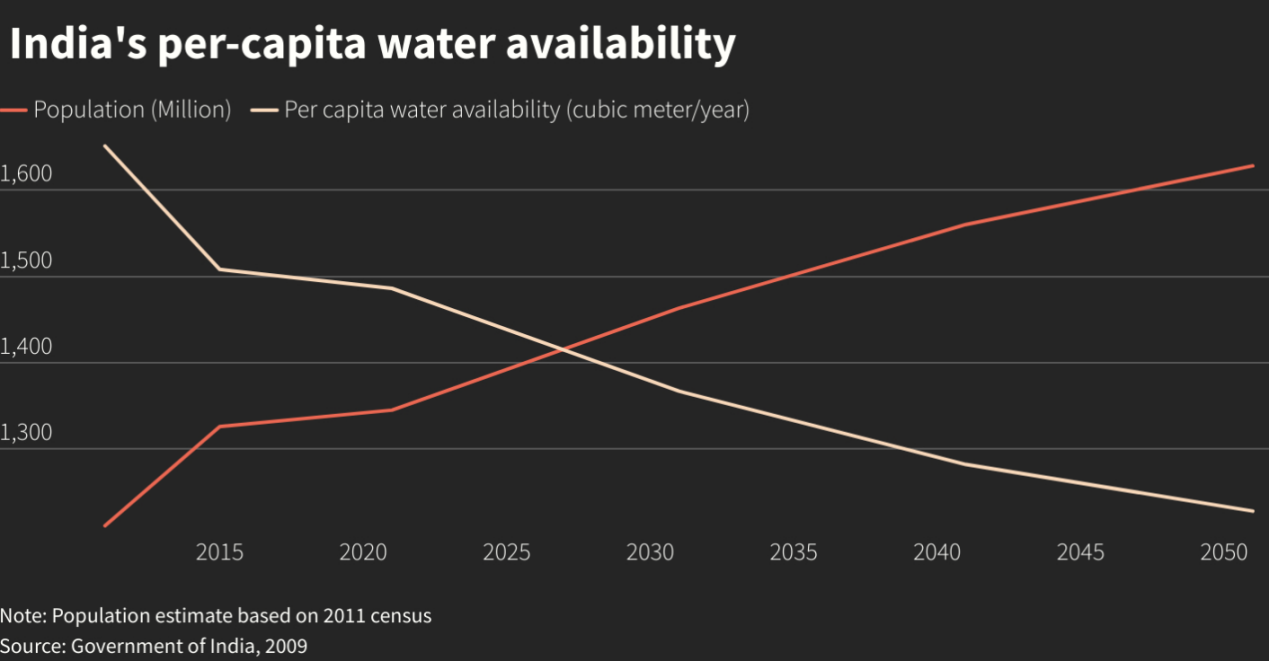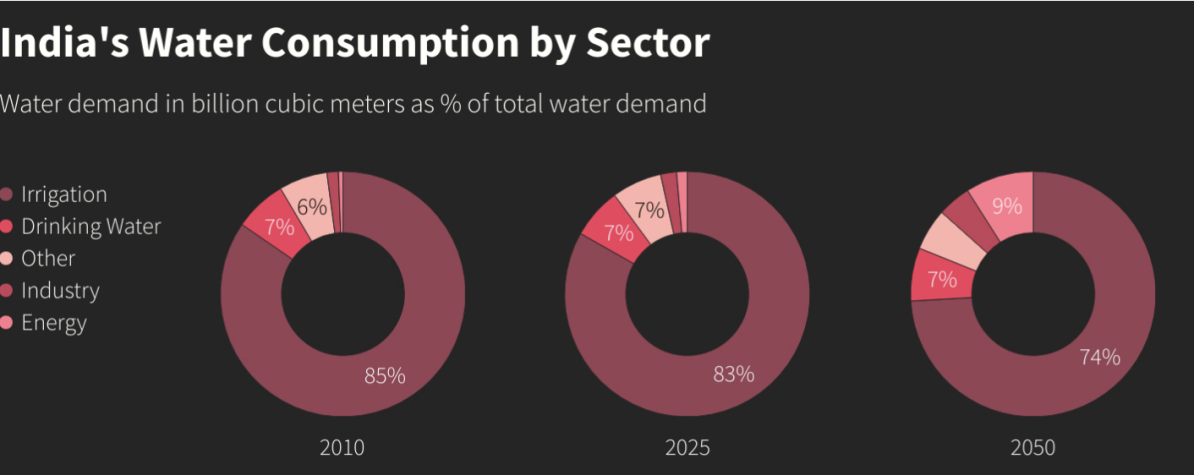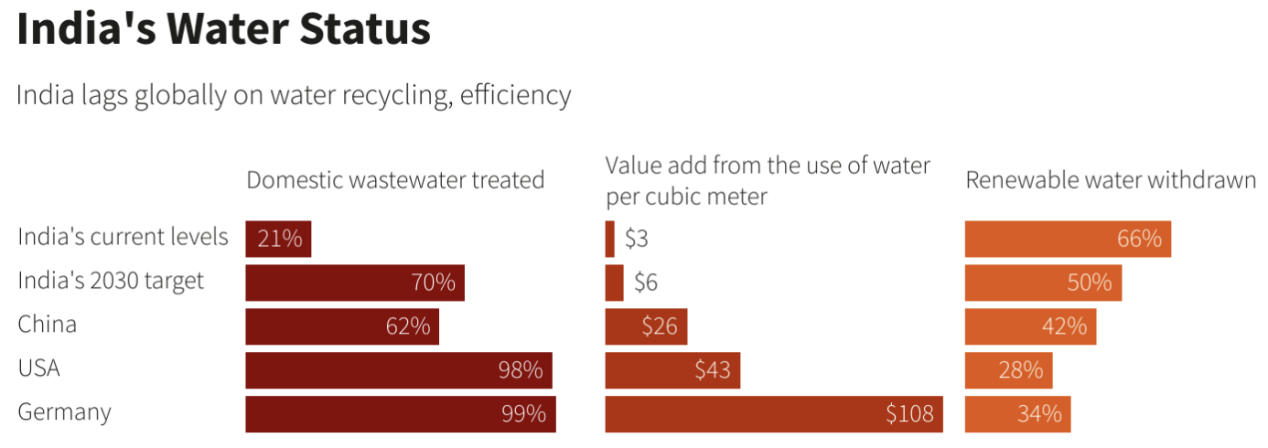7667766266
enquiry@shankarias.in
Global rating firm Moody’s has recently warned that India’s growing water shortage and frequent climate change-driven natural disasters can negatively affect the country’s sovereign credit strength.
According to World Bank, 163 Million Indians lack access to safe drinking water.

|
Water Shortage in New Delhi |
|
The Indian Ocean warmed at a rate of 1.2 degrees Celsius per century during 1950-2020, and this will intensify to 1.7-3.8 degrees Celsius during 2020-2100.



What lies ahead?
References